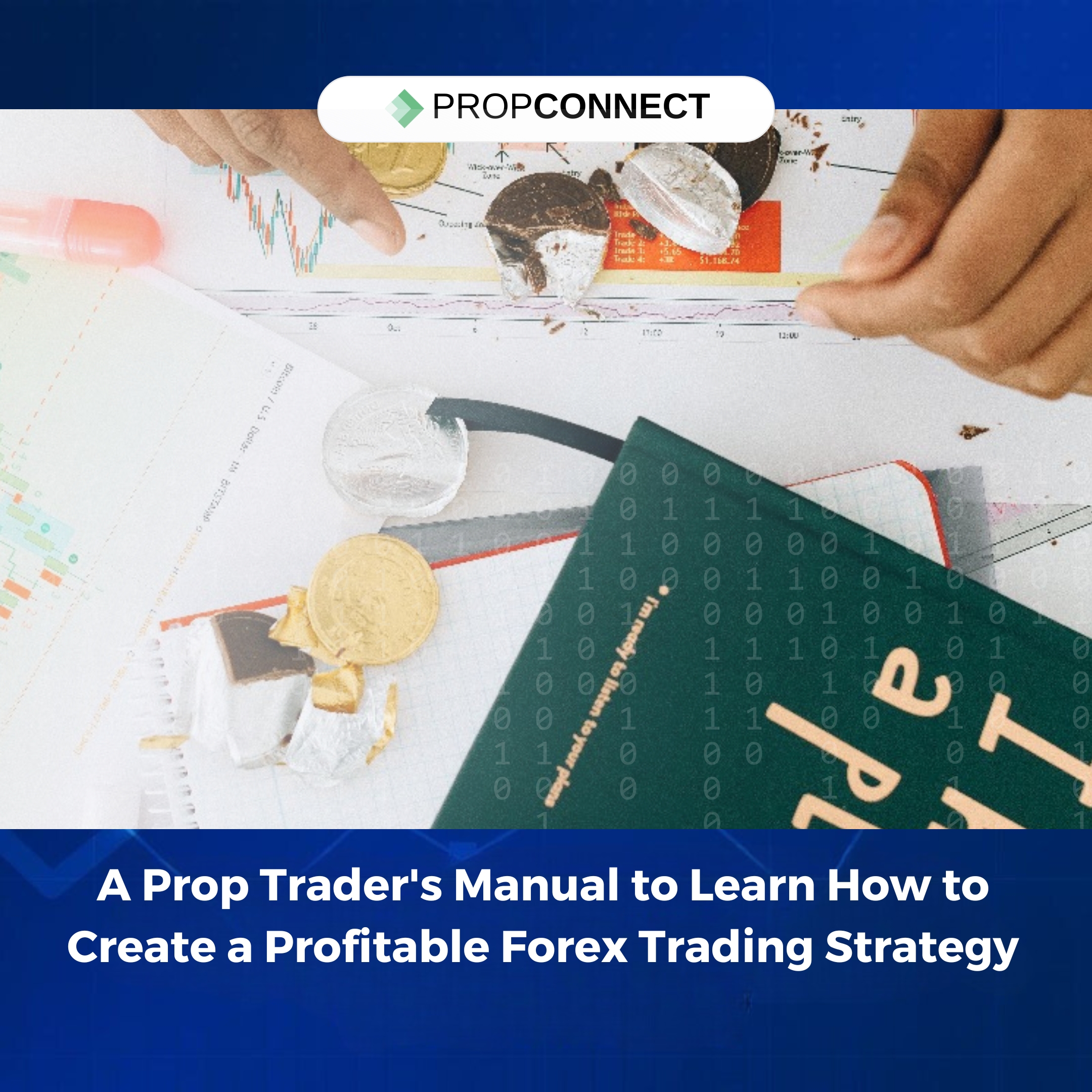Articles
A Prop Trader's Manual to Learn How to Create a Profitable Forex Trading Strategy
A good forex trading plan outlines exact entry and exit tactics. Traders must clearly outline the circumstances that justify starting a trade and the conditions under which they should withdraw, regardless of whether they focus on risk management or profit targets.

Success in the fast-paced world of proprietary trading depends on careful planning, self-control, and an organized strategy. For forex traders in prop firms, creating a thorough trading plan is like building a successful business from the ground up. This article acts as a guide, taking prop traders step-by-step through the necessary components of creating a solid forex trading plan.
Establish Your Trading Goals
Well-defined and quantifiable goals are the foundation of any profitable trading plan. Prop traders need to consider their financial objectives. To what extent are they willing to take risks? Knowing these goals establishes the tone for the remainder of the trading plan and aids in shaping the overall approach.
The Allocation of Capital and Risk Tolerance
Prop traders should ascertain their level of risk tolerance and the amount of capital they are willing to commit to each transaction before making any moves. To ensure that no trade puts a significant amount of their trading capital at risk, this entails setting a risk-per-deal percentage. Sophisticated risk management is essential for sustained success in the currency markets.
Choosing Trading Tools and Schedules
There is a huge selection of currency pairings and trading periods available in forex. Prop traders need to be sure that the instruments they use fit their tastes and trading styles. A well-defined plan should outline the selected instruments and the timeframes that best fit the trader's strategy, whether the focus is on big currency pairs for liquidity or exotic pairs for volatility.
Formulating Strategies for Entry and Exit
A good forex trading plan outlines exact entry and exit tactics. Traders must clearly outline the circumstances that justify starting a trade and the conditions under which they should withdraw, regardless of whether they focus on risk management or profit targets. To maintain discipline and reduce emotional decision-making, traders can incorporate automated instruments such as take-profit and stop-loss orders into their strategy.
Parameters of Technical and Fundamental Analysis
Proprietary traders typically combine technical and fundamental analysis. The trading plan should cover the specific indicators, chart patterns, and economic variables that guide trading decisions in detail. Whether employing RSI, moving averages, or keeping abreast of economic announcements, a well-defined methodology offers a methodical and consistent approach to the markets.
Optimization and Backtesting
Prop traders should carry out extensive Backtesting and optimization prior to implementing the trading plan in a live setting. This entails comparing the plan's performance under various market situations to previous data. Before putting actual money at risk, traders can improve and optimize their tactics by identifying their strengths and shortcomings.
Setting up Metrics of Performance
Prop traders should set up key performance indicators (KPIs) such as the risk-reward ratio, win-loss ratio, and total profitability to assess trading performance. Prop traders should set up key performance indicators (KPIs) such as the risk-reward ratio, win-loss ratio, and total profitability. Frequent evaluation of these data enables necessary adjustments and offers insights into the trading plan's efficacy.
Continuous Education and Flexibility
Because of the volatility of the FX market, profitable prop traders understand the value of continuing education. The trading plan should include provisions to stay informed about market trends, economic developments, and developing technology. An effective trading plan must have the flexibility to modify techniques in response to changing market conditions.
Effective Journaling and Documentation
An essential component of any trading plan is keeping a trading journal. Recording every deal and the reasoning behind it helps spot trends of success or failure and offers insightful information about decision-making. This material acts as a point of reference for continuing development and education.
Periods of Review and Adjustment
A trading plan should change as the trader's experience and the market do. It should not remain stagnant. Prop traders should plan regular review and modification times to gauge how well their strategy is working. By proactively reviewing and modifying the trading plan, traders can ensure its relevance and flexibility in response to the constantly shifting dynamics of the currency market.
In summary, the first step on a prop trader's path to long-term financial success is creating an effective forex trading plan. Through careful goal-setting, risk management, instrument selection, and ongoing education, traders may design a blueprint that not only directs their daily actions but also changes as they gain experience in the forex markets' ever-changing environment. A well-designed trading strategy is a dynamic framework that guides traders toward their financial objectives with resilience and discipline, rather than just a list of rules.

